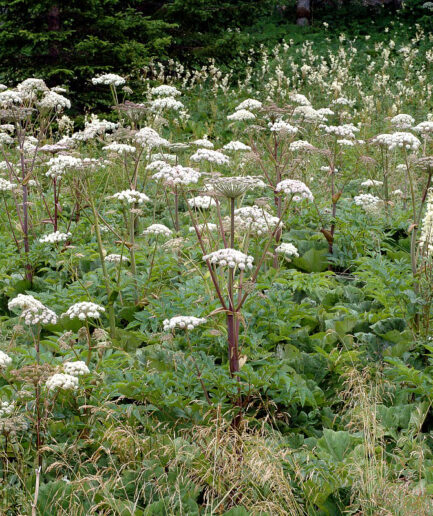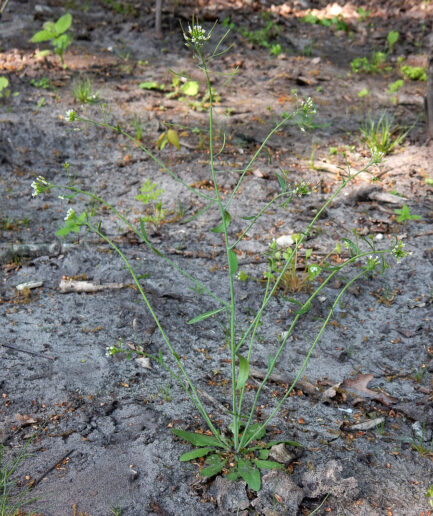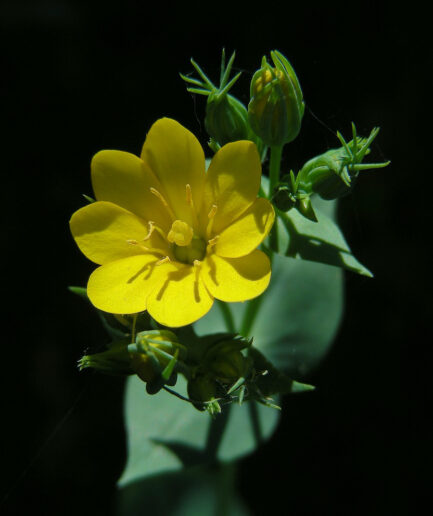Kenilworth ivy
Scientific name: Cymbalaria muralis G.Gaertn., B.Mey. & Scherb.
Family: Plantaginaceae
MORPHOLOGY
Growth habit and size: Perennial, stoloniferous, herbaceous plant, 10-40 cm tall.
Stem: Slender and delicate, often reddish, woody at the base, creeping, climbing or pendulous, branched and glabrous.
Leaves: Leaves are alternate, exceptionally the lower ones are opposite, borne on a petiole longer than the blade (2-4 cm), light green but often reddish on the lower surface, shiny and glabrous, fleshy, slightly concave, measuring about 15 mm, approximately as wide as they are long with a semicircular, reniform, or suborbicular profile, palmately lobed, with 5-9 triangular-rounded lobes, unequal (the central ones larger than the lateral ones), obtuse on the lower leaves and generally mucronate on the upper ones.
Flowers: Hermaphroditic, zygomorphic, solitary or paired in the leaf axils, 1 cm long including the slightly curved spur, twice as short as the corolla, with a glabrous or slightly hairy calyx divided into 4 lanceolate-linear, acute lobes. The corolla is bilabiate, with a violet or whitish tube with darker veins, the upper lip with 2 violet lobes lighter in the center with darker veins at the base, the lower lip swollen with two yellow gibbosities that close the throat, the spur generally as large as the calyx, conical, violet or whitish. It blooms from February to October.
Fruits and seeds: The fruit is a glabrous, globose capsule, slightly protruding from the calyx, dehiscent with 3 openings at the top; black, ovoid, rough, and crested seeds.
DISTRIBUTION AND HABITAT
It grows throughout Italy, from sea level up to 1,500 m. It thrives on rocks, moist walls, and anthropized areas.
USE
It is said to have healing and anti-inflammatory, diuretic, antiscorbutic, vulnerary, astringent, and anti-hemorrhoidal properties. Before taking any plant-based product (medicinal or non-medicinal) for therapeutic or similar purposes, it is always advisable to consult a doctor.
Photo: Kindly provided by Claudio Farinati



















